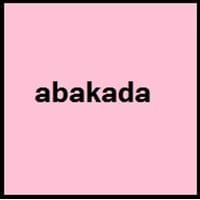Cantonese vs Tagalog
Countries
Hong Kong, Macau
Philippines
National Language
China, Guangdong
Philippines
Second Language
Not spoken in any of the countries
Filipinos
Speaking Continents
Asia
Asia, Australia
Minority Language
Hawaii
Australia, Canada, Guam, Hong Kong, New Zealand, Singapore, United Kingdom
Regulated By
Civil Service Bureau, Government of Hong Kong, Official Language Division
Komisyon sa Wikang Filipino, National Languages Committee
Interesting Facts
- Cantonese have lot of slangs, many of them include words that do not make sense at all and some also have English in them.
- Even though Cantonese and Mandarin are dialects of Chinese, Cantonese has 8 tones instead of Mandarin's 4.
- In 1593, "Doctrina Christiana" was first book written in two versions of Tagalog.
- The name "Tagalog" means "native to" and "river". "Tagalog"is derived from taga ilog, which means "inhabitants of the river".
Similar To
Chinese Language
Filipino, Cebuano and Spanish Languages
Derived From
Not Available
Not Available
Alphabets in
Cantonese-Alphabets.jpg#200
Tagalog-Alphabets.jpg#200
Scripts
Chinese Characters and derivatives
Baybayin
Writing Direction
Left-To-Right, Horizontal, Top-To-Bottom
Left-To-Right, Horizontal
How Are You?
你好吗?
Kamusta ka na?
Good Night
晚安
Magandang gabi
Good Evening
晚上好
Magandang gabi po
Good Afternoon
下午好
Magandang hapon po
Good Morning
早上好
Magandang umaga po
I Love You
我爱你
Iniibig kita
Excuse Me
原谅我
Ipagpaumanhin ninyo ako
Dialect 1
Guangzhou
Batangas Tagalog
Where They Speak
outside mainland China
Batangas, Gabon
Where They Speak
Hong Kong
Philippines
Dialect 3
Hong Kong
Filipino
Where They Speak
Hong Kong
Philippines
How Many People Speak
Not Available
Second Language Speakers
Not Available
Native Name
Kwang Tung Wa
Tagalog
Alternative Names
Guangfu, Metropolitan Cantonese
Filipino, Pilipino
French Name
Not Available
tagalog
German Name
Not Available
Tagalog
Pronunciation
Not Available
[tɐˈɡaːloɡ]
Ethnicity
Not Available
Tagalog people
Language Family
Sino-Tibetan Family
Austronesian Family
Subgroup
Not Available
Indonesian
Branch
Not Available
Not Available
Early Forms
No early forms
Proto-Philippine, Old Tagalog, Classical Tagalog, Tagalog
Standard Forms
Standard Cantonese
Filipino
Language Position
Not Available
Signed Forms
Not Available
Not Available
Scope
Not Available
Individual
ISO 639 1
No data available
t1
ISO 639 2/T
Not Available
tgl
ISO 639 2/B
Not Available
tgl
ISO 639 3
No data available
tg1
ISO 639 6
Not Available
Not Available
Glottocode
cant1236
taga1269
Linguasphere
No data available
31-CKA
Language Type
Not Available
Living
Language Linguistic Typology
Not Available
Object-Verb-Subject, Subject-Verb-Object, Verb-Object-Subject, Verb-Subject-Object
Language Morphological Typology
Not Available
Not Available
Cantonese and Tagalog Language History
Comparison of Cantonese vs Tagalog language history gives us differences between origin of Cantonese and Tagalog language. History of Cantonese language states that this language originated in 17th century whereas history of Tagalog language states that this language originated in 1593. Family of the language also forms a part of history of that language. More on language families of these languages can be found out on Cantonese and Tagalog Language History.
Cantonese and Tagalog Greetings
People around the world use different languages to interact with each other. Even if we cannot communicate fluently in any language, it will always be beneficial to know about some of the common greetings or phrases from that language. This is where Cantonese and Tagalog greetings helps you to understand basic phrases in Cantonese and Tagalog language. Cantonese word for "Hello" is 您好 or Tagalog word for "Thank You" is Salamat po. Find more of such common Cantonese Greetings and Tagalog Greetings. These greetings will help you to be more confident when conversing with natives that speak these languages.
Cantonese vs Tagalog Difficulty
The Cantonese vs Tagalog difficulty level basically depends on the number of Cantonese Alphabets and Tagalog Alphabets. Also the number of vowels and consonants in the language plays an important role in deciding the difficulty level of that language. The important points to be considered when we compare Cantonese and Tagalog are the origin, speaking countries, language family, different greetings, speaking population of these languages. Want to know in Cantonese and Tagalog, which language is harder to learn? Time required to learn Cantonese is 88 weeks while to learn Tagalog time required is 44 weeks.





